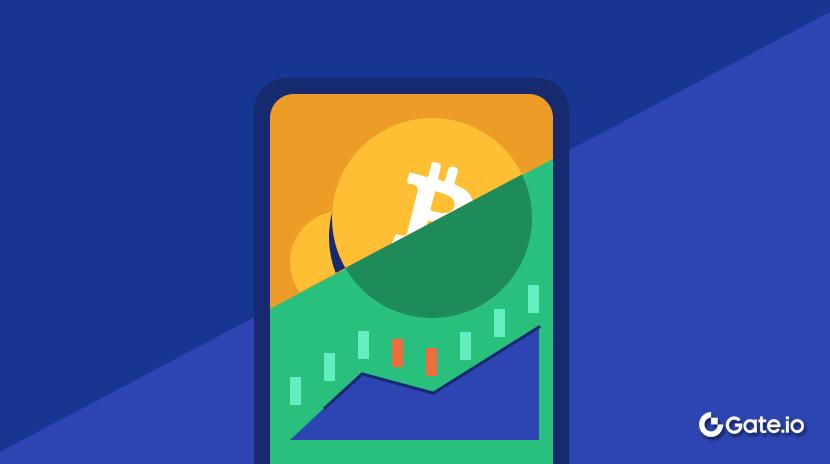Front Running là gì trong không gian Tiền điện tử?
Giới thiệu
Chạy trước đã là một vấn đề lâu nay trong thị trường tài chính. Nó bắt nguồn từ tài chính truyền thống, nơi mà các nhà môi giới hoặc người trong cuộc sử dụng thông tin đặc quyền để đặt lệnh giao dịch trước khách hàng. Điều này đã được xác định là không đạo đức và bất hợp pháp, và các quan chức quản lý bắt giữ và truy tố những kẻ phạm tội.
Trên không gian tiền điện tử, chạy trước xảy ra trên chuỗi do tính minh bạch của giao dịch blockchain công khai. Các nhà giao dịch, bot, và thậm chí cả những người xác nhận hoặc khai thác có thể lợi dụng giao dịch đang chờ xử lý trong mempool để kiếm lời.
Không giống như trên thị trường truyền thống, việc chạy trước tiền điện tử tồn tại trong một khu vực mơ hồ về pháp lý. Mặc dù nó thường được coi là không đạo đức, chỉ những người có chuyên môn kỹ thuật để can thiệp vào thứ tự giao dịch mới thực sự tận dụng được cơ hội này.
Front-Running là gì trong Tiền điện tử?
Chạy trước trong tiền điện tử là lợi dụng giao dịch đang chờ xử lý công khai để có lợi thế tài chính bằng cách thực hiện giao dịch trước khi giao dịch gốc được xử lý.
Nhìn chung, các giao dịch trên blockchain không thực hiện ngay lập tức. Thay vào đó, chúng được đưa vào khu vực chờ đợi được gọi là mempool (bể nhớ), nơi chúng sẽ ở cho đến khi các máy đào hoặc xác minh viên xử lý chúng. Đây là cửa sổ cơ hội cho các hành động độc hại theo dõi giao dịch và xác định giao dịch quan trọng nhất mà sẽ mang lại lợi nhuận cao nhất. Họ thường sử dụng bot và trả các phí gas cao hơn để được ưu tiên xử lý các giao dịch này.
Chạy trước chủ yếu nhắm vào các sàn giao dịch phi tập trung, các giao dịch lớn, và các mã thông báo thanh khoản thấp với biến động giá được phóng đại. Mặc dù có thể xảy ra trên các mã thông báo vốn hóa lớn, sự cạnh tranh cao, thanh khoản sâu, và các khoản phí gas đắt đỏ khiến nó ít thực tế hơn trừ khi lợi nhuận dự kiến đáng kể.
Các hình thức Chạy trước trong Tiền điện tử
Chạy trước trong tiền điện tử có các hình thức khác nhau tùy thuộc vào điều kiện thị trường, các bên tham gia và chiến lược thực hiện. Dưới đây là các loại chính của việc chạy trước và cách họ hoạt động;
Di chuyển
Người giao dịch theo dõi mempool để tìm các lệnh mua hoặc bán lớn và đặt lệnh giao dịch trước để lợi nhuận từ sự di chuyển giá dự kiến. Ví dụ, một kẻ tấn công có thể mua tài sản ngay trước khi một lệnh lớn được thực hiện bằng cách cung cấp một mức giá gas cao hơn, đảm bảo rằng giao dịch của họ được ưu tiên và xử lý trước giao dịch của nạn nhân.
Sự đàn áp
Những kẻ xấu lợi dụng lượng giao dịch lớn bằng cách theo dõi các đơn đặt hàng lớn. Khi họ xác định được một, họ tạo ra một cụm giao dịch làm cho mạng bị quá tải. Do đó, nạn nhân gặp khó khăn khi thực hiện đơn đặt hàng của mình, vì giao dịch của họ gặp khó khăn khi tìm không gian trong cùng một khối do số lượng giao dịch ưu tiên cao cạnh tranh quá nhiều.
Giá trị Rút Tối Đa (MEV) Chạy Trước bởi Người Xác Thực/ Thợ Đào
Người đào hoặc xác nhận viên sắp xếp lại các giao dịch trong một khối để trích xuất Giá trị Có thể Trích xuất Tối đa (MEV). Thay vì xử lý giao dịch theo thứ tự chúng đến, họ ưu tiên giao dịch của chính họ hoặc của người khác tạo ra giá trị có thể trích xuất tối đa (MEV), tức là khả năng trích xuất lợi nhuận bằng cách thao tác thứ tự giao dịch.
Ví dụ:
- Ví dụ, nếu họ thấy một lệnh mua lớn, họ có thể chèn giao dịch của họ trước giao dịch có lợi nhuận được quan sát.
- Sau khi lệnh lớn ban đầu được thực thi và giá tiếp tục tăng, họ có thể bán số lượng cổ phần của mình để có lời.
Tấn công sandwich
Trong một cuộc tấn công sandwich, kẻ tấn công độc hại xác định một giao dịch lớn đang chờ xử lý và đặt hai giao dịch xung quanh nó: một lệnh trước và một lệnh sau giao dịch của nạn nhân.
Ví dụ: Nếu một người dùng cố gắng mua một token ở giá $1.00, kẻ tấn công sẽ mua trước, đẩy giá lên $1.10, sau đó bán lại với giá được thổi phồng, thu lợi tại sự thiệt hại của người dùng.
Cách hoạt động Chạy trước: Một phân tích từng bước

Nguồn:Hacken
Phát hiện giao dịch đang chờ có lợi nhuận
- Tất cả các giao dịch trên blockchain đầu tiên sẽ được đưa vào một khu vực lưu trữ tạm thời được gọi là 'mempool' trước khi được xác nhận.
- Người chạy trước sử dụng bot để quét mempool để tìm các giao dịch có thể bị lợi dụng, như đơn đặt mua lớn, cơ hội cơ địa, hoặc sự kiện thanh lý.
- Họ nhắm đến các giao dịch sẽ ảnh hưởng đáng kể đến giá của một tài sản.
Ví dụ: Một nhà giao dịch đặt một lệnh mua lớn cho Token A trên Uniswap. Bot chạy trước phát hiện giao dịch này trong bộ nhớ tạm.
Gửi giao dịch tương tự với mức phí Gas cao hơn
- Một khi một người chạy trước xác định giao dịch có lợi nhuận, họ nhanh chóng tạo ra một giao dịch tương tự nhưng tăng phí gas để ưu tiên thực hiện nó.
- Vì Ethereum và các chuỗi khối khác xử lý giao dịch theo thứ tự phí gas được thanh toán, giao dịch của người chạy trước được thực thi trước.
Ví dụ: Người đứng đầu gửi lệnh mua của họ cho Token A với một mức phí gas cao hơn để xử lý lệnh của họ trước giao dịch của người giao dịch ban đầu.
Giao dịch của người đứng đầu thực hiện trước, làm thay đổi giá
- Vì người đứng đầu mua token trước, việc mua của họ làm tăng giá.
- Khi giao dịch gốc được thực hiện, nó sẽ được thực hiện ở mức giá cao hơn do tác động giá cả gây ra bởi giao dịch của người chạy trước.
Ví dụ: Lệnh mua của người đứng đầu tăng giá của Token A từ $10 lên $11 trước khi lệnh gốc của người giao dịch được thực hiện.
Giao dịch ban đầu được thực hiện ở mức giá không thuận lợi hơn
- Người giao dịch gốc, không biết về cuộc tấn công chạy trước, đã có giao dịch của họ được xử lý ở mức giá mới, cao hơn.
- Họ trải nghiệm tăng slippage (một thực thi giá tệ hơn mong đợi).
- Người đứng đầu hưởng lợi từ sự tăng giá giả tạo.
Ví dụ: Thay vì mua Token A ở $10 như dự định, lệnh của người giao dịch được thực hiện ở $11 do sự tăng giá do Chạy trước gây ra.
Người dẫn đầu thoát, đảm bảo lợi nhuận
- Sau khi giao dịch của người giao dịch ban đầu được hoàn thành, người chạy trước bán token với giá được thổi phồng.
- Điều này dẫn đến lợi nhuận ngay lập tức cho người chạy trước, thường là tại sự thiệt hại của những trader không ngờ tới.
- Trong một số trường hợp, bot liên tục lặp lại quá trình này để rút lợi nhuận từ nhiều giao dịch.
Ví dụ: Người đứng đầu bán Token A ở $11, thu được lợi nhuận từ sự khác biệt về giá.
Trường hợp nghiên cứu
Cuộc tấn công Sandwich trên Solana
A báo cáo được phát hànhnăm 2024 bởi Blockworks xác nhận rằng các sự cố chạy trước tiếp tục xảy ra trên chuỗi khối Solana. Điều này là do một nhóm các người xác minh tham gia vào các bể nhớ tư nhân để tạo điều kiện cho “các cuộc tấn công sandwich.” Nhằm đáp ứng, Quỹ Solana đã phạt các người xác minh liên quan.
Theo thiết kế, blockchain Solana không cung cấp một mempool công cộng để người dùng theo dõi giao dịch đang chờ xử lý, làm cho việc chạy trước khó khăn hơn nhiều. Tuy nhiên, như là người tham gia chính, các validator vẫn có quyền truy cập để xem giao dịch đã được xử lý.
Chạy trước phòng thủ — Hack Curve Finance
Vào tháng 7 năm 2023, Curve Finance, một nền tảng tài chính phi tập trung (DeFi) nổi bật, đã trải qua một vụ vi phạm bảo mật đáng kể do các lỗ hổng trong các phiên bản cụ thể của ngôn ngữ lập trình Vyper được sử dụng trong các hợp đồng thông minh của họ. Cuộc khai thác này nhắm vào một số hồ bơi thanh khoản, dẫn đến các tổn thất tài chính đáng kể.
Như phản ứng, các nhà hoạt động đạo đức triển khai chiến lược chạy trước để đối phó với các giao dịch độc hại, họ triển khai bot MEV để thực hiện giao dịch trước khi hacker thử, hiệu quả ngăn chặn và bảo vệ các khoản tiền rủi ro. Đáng chú ý, người vận hành được biết đến với biệt danh “c0ffeebabe.eth” đã thành công trong việc chạy trước kẻ tấn công, bảo vệ được 2.879 ETH (khoảng 5,4 triệu USD) và sau đó trả lại cho Curve Finance.
Tác động của Chạy trước trên thị trường Tiền điện tử
Sự áp dụng hạn chế
Chạy trước tạo ra một danh tiếng tiêu cực cho thị trường tiền điện tử, đặc biệt là đối với các sàn giao dịch phi tập trung, vì những nhà giao dịch cảm thấy giao dịch của họ có nguy cơ bị chạy trước nên tránh sử dụng các nền tảng này.
Thao tác
Người chạy trước thao túng hoạt động thị trường để tạo ra sự hưng phấn nhân tạo xung quanh một mã thông báo, đánh lừa các nhà giao dịch không kinh nghiệm vào việc hiểu việc tăng khối lượng là một chỉ báo tích cực. Chiêu thuật này che giấu giá trị thực sự của tài sản.
Tắc nghẽn mạng
Nhiều bot Chạy trước trên một blockchain có thể làm tắc nghẽn mạng, dẫn đến cuộc đấu giá để xử lý giao dịch. Người dùng thường gánh chịu hậu quả của những sự kiện này vì họ cũng phải trả phí gas cao hơn.
Làm thế nào để Ngăn chặn Chạy trước trong Tiền điện tử
Người truyền tải giao dịch riêng tư
Một người truyền giao dịch riêng tư trên chuỗi khối cho phép người dùng gửi giao dịch trên mạng lưới chuỗi khối mà không tiết lộ chi tiết của những giao dịch đó công khai trên mạng lưới chính. Điều này thường được thực hiện bằng cách sử dụng một mempool riêng, riêng tư để truyền thông tin giao dịch đến chuỗi khối, do đó duy trì sự riêng tư cho người gửi và người nhận. Các dịch vụ như Flashbots, Eden Network và MEV-Blocker giúp người dùng tránh qua mempool công cộng, ngăn chặn bot phát hiện giao dịch.
Bảo vệ trượt giá
Đặt ngưỡng trượt thấp đảm bảo giao dịch sẽ không được thực hiện nếu giá thay đổi vượt quá một giới hạn nhất định. Việc áp dụng hạn chế trượt là quan trọng, và tỷ lệ trượt nên được đặt giữa 0.1% và 5%, tùy thuộc vào phí mạng và kích thước swap.
Sắp xếp giao dịch ngẫu nhiên
Thứ tự Giao dịch Ngẫu nhiên trong một chuỗi khối đề cập đến một hệ thống trong đó thứ tự các giao dịch trong một khối được xác định ngẫu nhiên. Điều này ngăn chặn các bên xấu chiến lược đặt giao dịch của họ một cách chiến lược để có lợi thế không công bằng. Các giao thức như Dịch vụ Xếp hàng Công bằng (FSS) của Chainlink ngăn chặn việc sắp xếp lại giao dịch dựa trên phí gas.
Đấu giá lô
Một số giao thức DeFi cung cấp Batch Auction, một tính năng trong đó nhiều đơn đặt hàng cá nhân được nhóm lại thành một “batch” và thực hiện đồng thời để ngăn chặn sự thao túng và chạy trước.
Giải pháp Layer 2 (L2) và Rollups
Các giải pháp Layer 2 như ZK-Rollups ẩn chi tiết giao dịch trong mempool, giảm nguy cơ Chạy trước.
Tránh Thời Gian Giao Dịch Cao Điểm
Thực hiện giao dịch vào thời điểm giảm tải có thể giảm khả năng bị nhắm mục tiêu, vì những người chạy trước hoạt động nhiều hơn vào các giai đoạn hoạt động cao điểm.
Rate Limiting
Việc áp đặt hạn chế về tần suất giao dịch từ một địa chỉ duy nhất có thể ngăn chặn việc chạy trước của những người thường xuyên hoạt động bằng cách lắng đọng mạng lưới bằng các giao dịch liên tiếp nhanh chóng.
Kiểm định Hợp đồng Thông minh
Các cuộc kiểm toán định kỳ bởi các công ty uy tín có thể xác định các lỗ hổng trong các hợp đồng thông minh có thể dễ bị chạy trước hoặc các hoạt động độc hại khác.
Kết luận
Chạy trước làm tổn thương uy tín của thị trường tiền điện tử và làm suy yếu mục tiêu cung cấp một lựa chọn công bằng hơn so với thị trường tài chính truyền thống. Mặc dù việc theo dõi những người chạy trước là thách thức, nhưng có các giải pháp khác nhau để giảm thiểu hành vi này. Điều này bao gồm các công cụ chống MEV (Giá trị tối đa có thể rút ra), các giải pháp Layer 2, trình truyền giao dịch riêng tư và kiến trúc sàn giao dịch phi tập trung mới.
Cộng đồng blockchain cũng có thể áp dụng cơ chế để phạt các thợ đào và người xác minh đang thao túng thứ tự giao dịch vì lợi ích cá nhân. Thay vào đó, việc sử dụng đạo đức trong việc chạy trước, như đã thấy trong vụ hack Curvance, nên được khuyến khích. Khi ngành công nghiệp phát triển, sự nỗ lực tập thể hướng đến các thực hành giao dịch công bằng hơn sẽ giúp xây dựng niềm tin và tính toàn vẹn trong tài chính phi tập trung, tạo ra điều kiện cần thiết cho sự áp dụng rộng rãi.
Bài viết liên quan

Cách thực hiện nghiên cứu của riêng bạn (DYOR)?

Phân tích cơ bản là gì?

Tronscan là gì và Bạn có thể sử dụng nó như thế nào vào năm 2025?

Phân tích kỹ thuật là gì?

Hướng dẫn giao dịch cho người mới bắt đầu
